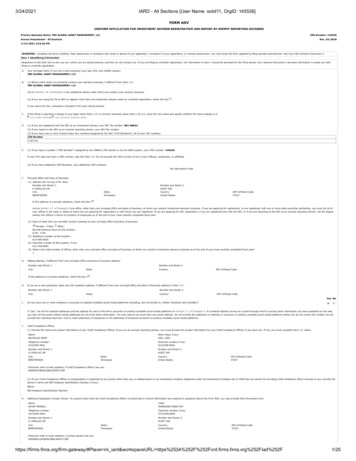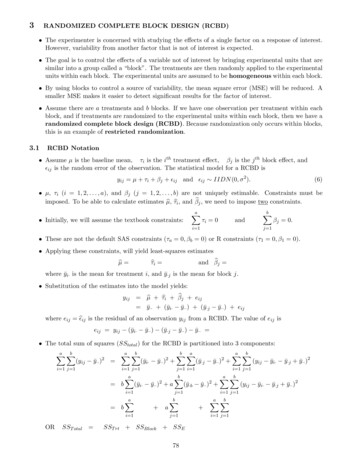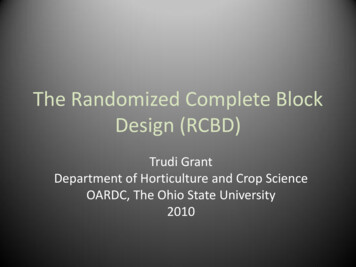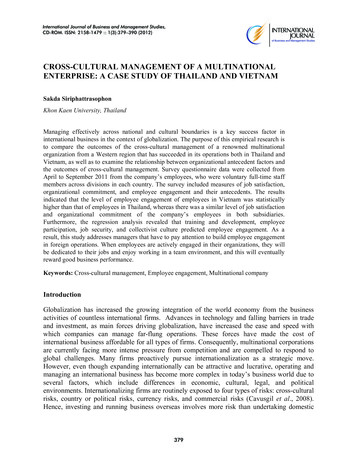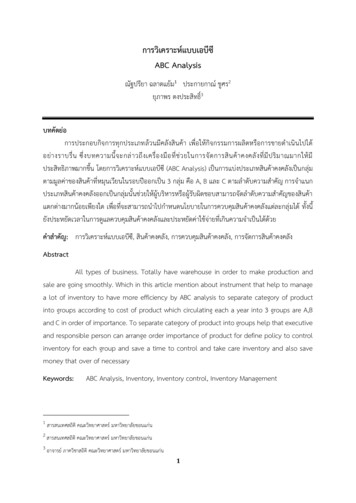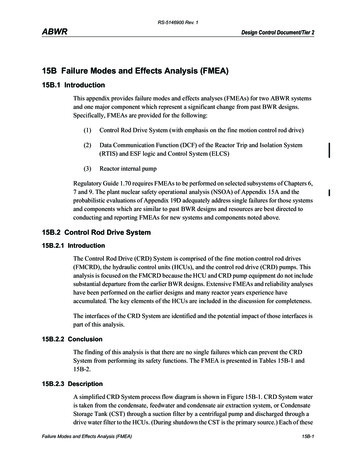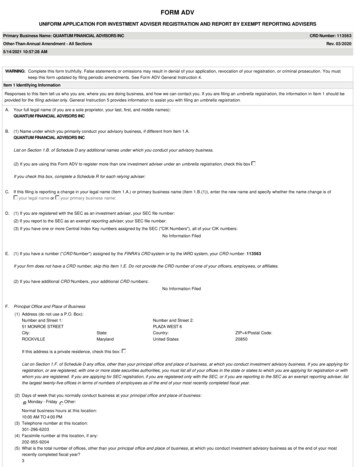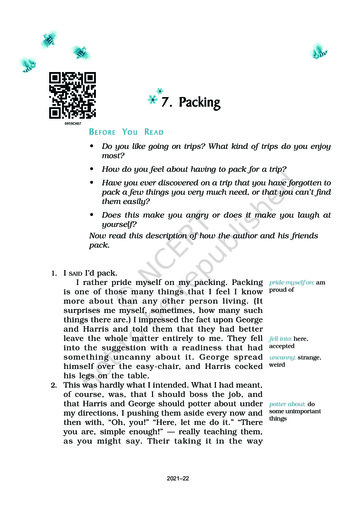
Transcription
CRD and RCBDAssist.Prof.Dr.Wuttigrai BoonkumDepartment of Animal Science, KKU
CRD(Completely Randomized Design)Description of the Design Simplest design to use. Design can be used whenexperimental units are essentiallyhomogeneous. The CRD is best suited forexperiments with a small numberof treatments.
Randomization Procedure Treatments are assigned toexperimental units completely atrandom. Every experimental unit has the sameprobability of receiving any treatment. Randomization is performed using arandom number table, computer,program, etc.
Advantages of a CRD Very flexible design (i.e. number oftreatments and replicates is only limited by theavailable number of experimental units). Statistical analysis is simple compared toother designs. Loss of information due to missing data issmall compared to other designs due to thelarger number of degrees of freedom for theerror source of variation.
Disadvantages If experimental units are not homogeneousand you fail to minimize this variation usingblocking, there may be a loss of precision. Usually the least efficient design unlessexperimental units are homogeneous. Not suited for a large number of treatments.
EU 9TRT 3 (T1, T2, T3All animals should beuniformT2T1T3T1T1T1T3T2T3Rep 3 animals/TRTT1 T2T1T2T2CRDT3T2T3T3
Ex. CRD Conducting 4 treatments in 20 pigs to see theeffects of management types on growthperformance.T1 Raise in limit group penT2 Raise outdoor in the fieldT3 Raise in the groundT4 Raise in individual pen All treatments fed with the same feed ration.
Statistic model of CRDYij µ τi εi jwhereYij is the jth observation of the ith treatmentµ is the population mean,τi is the treatment effect of the ithtreatment, andεi is the random error.
The Hypotheses for Testing TreatmentMean DifferencesThe null hypothesis is no difference amongtreatment means versus the research hypothesistreatment means differ.
ANOVA table of EMSTTotaltr-1Total SSMSEt treatment , r replicationMS (Mean Square) SS (Sum of Square)df (degree of freedom)10
RCBDA randomized complete block design is anexperimental design for comparing t treatments in bblocks. The blocks consist of t homogeneousexperimental units. Treatments are randomlyassigned to experimental units within a block, witheach treatment appearing exactly once in every block.
Advantages of the RandomizedComplete Block Design1. The design is useful for comparing t treatmentmeans in the presence of a single extraneoussource of variability.2. The statistical analysis is simple.3. The design is easy to construct.4. It can be used to accommodate any number oftreatments in any number of blocks.
Disadvantages of the RandomizedComplete Block Design1. Because the experimental units within a block must behomogeneous, the design is best suited for a relativelysmall number of treatments.2. This design controls for only one extraneous source ofvariability (due to blocks). Additional extraneous sourcesof variability tend to increase the error term, making itmore difficult to detect treatment differences.3. The effect of each treatment on the response must beapproximately the same from block to block.
EU 9All animals are notuniformTRT 3 (T1 Drug1, T2 Drug2, T3 Drug3)RCBDT1T1T3T2TT32T1Animals within eachblock are uniformT3T2
ANOVA table of ror(r-1)(t-1)SSEMSETotaltr-1Total SSFMSTMSEt treatment , r block16
Ex. RCBD Conducting 3 salt supplements in 12 cattle tosee the effects on growth performance.T1 Control (no supplement)T2 Supplement with salt 100g/dT3 Supplement with salt molassAll animals are native cattle, but want to test infour locations.
Data collection RCBD was performed. Eu 12 , Trt 3, locations 4,Rep eu/trt 12/3 4 reps/trt Observations are ADGlocation 12T1 :150300T2 200350T3 25040031202502804240420400
Criteria for blockingCriteriaCharacteristicsNeighboring stallexperiment with different groups ofstall, plotNaturalcharacteristicsanimals with different parity, litter,lactation, hatch, age group, weightgroup, sex, genetic sourceTime of conductexperiment with different period, batch,seasonTask managementexperiment with different technician,equipments, housing
The statistical analysis is simple. 3. The design is easy to construct. 4. It can be used to accommodate any number of treatments in any number of blocks. Disadvantages of the Randomized Complete Block Design 1. Because the experimental units within a block must be
